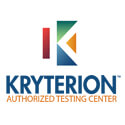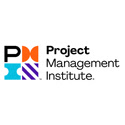Designing and Deploying Microsoft Exchange Server 2016
About This Course
Designed to prepare you for Exam 70-345, the course would help you hone real-world expertise when it comes to troubleshooting, management, migration, compliance, deployment and planning for Microsoft Exchange Server 2016. Aimed at IT experts, who wish to drive their careers to the next level in the MCSE level, the course also focuses on improving your decision making and critical thinking abilities.
Who Should Attend this Course.
The course is a huge hit among senior server administrators and IT consultants.
It is best-suited for:
- Server administrators
- IT architects
Most important of all, the course is apt for the ones, who are keen to take up Exam 70-345, which includes senior administrators and IT consultants.
Why This Course
The course will help you spruce up your real-world proficiency in designing, planning, deploying, troubleshooting and migrating for Microsoft Exchange Server 2016 thus, setting up you for Exam 70-345. And, as we know that Exam 70-345 is one of the key prerequisites for becoming successful system administrators, system engineers and IT architects in the Microsoft Exchange Server domain, Microsoft Exchange Server 2016 70-345 acts as the stepping stone.
Did you know a Microsoft Exchange Server 2016 70-354 certified expert earns around $94,921 / annum (source: itcareerfinder.com)
Course Objectives
- Plan, manage and deploy server infrastructure
- Troubleshoot client access
- Server administration
- Archiving, compliance and security
- Migration and hybrid
- Transport services
- Mailbox databases
Course Prerequisites
Prior exposure to basic networking, Exchange Server, Windows Server, DNS, Active Directory is suggested for this course.
- Basic knowledge of Skype / Office 365 and Server integration is a bonus
- Prior experience in managing Exchange Servers is a win-win situation
Course Benefits
Upon the completion of this course, you will be able to:
- Manage, plan and deploy mailbox databases
- Troubleshoot client access
- Troubleshoot transport services
- Manage migration and hybrid scenarios
- Manage, deploy and plan auditing, compliance and archiving
- Manage, deploy and plan security, recipients and infrastructure
- Manage and administer Exchange Server 2016





























